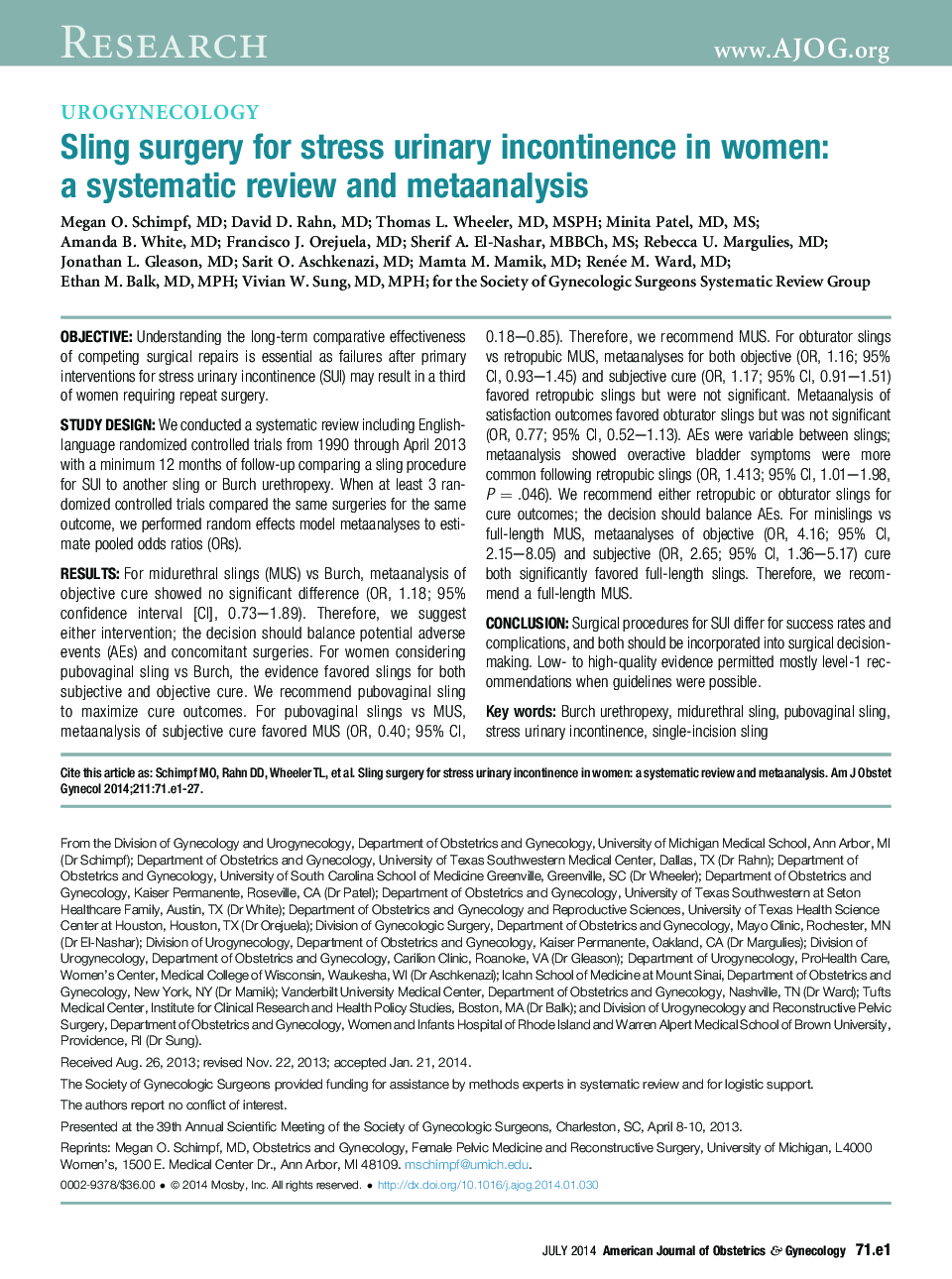| Article ID | Journal | Published Year | Pages | File Type |
|---|---|---|---|---|
| 6144936 | American Journal of Obstetrics and Gynecology | 2014 | 27 Pages |
ObjectiveUnderstanding the long-term comparative effectiveness of competing surgical repairs is essential as failures after primary interventions for stress urinary incontinence (SUI) may result in a third of women requiring repeat surgery.Study DesignWe conducted a systematic review including English-language randomized controlled trials from 1990 through April 2013 with a minimum 12 months of follow-up comparing a sling procedure for SUI to another sling or Burch urethropexy. When at least 3 randomized controlled trials compared the same surgeries for the same outcome, we performed random effects model metaanalyses to estimate pooled odds ratios (ORs).ResultsFor midurethral slings (MUS) vs Burch, metaanalysis of objective cure showed no significant difference (OR, 1.18; 95% confidence interval [CI], 0.73-1.89). Therefore, we suggest either intervention; the decision should balance potential adverse events (AEs) and concomitant surgeries. For women considering pubovaginal sling vs Burch, the evidence favored slings for both subjective and objective cure. We recommend pubovaginal sling to maximize cure outcomes. For pubovaginal slings vs MUS, metaanalysis of subjective cure favored MUS (OR, 0.40; 95% CI, 0.18-0.85). Therefore, we recommend MUS. For obturator slings vs retropubic MUS, metaanalyses for both objective (OR, 1.16; 95% CI, 0.93-1.45) and subjective cure (OR, 1.17; 95% CI, 0.91-1.51) favored retropubic slings but were not significant. Metaanalysis of satisfaction outcomes favored obturator slings but was not significant (OR, 0.77; 95% CI, 0.52-1.13). AEs were variable between slings; metaanalysis showed overactive bladder symptoms were more common following retropubic slings (OR, 1.413; 95% CI, 1.01-1.98, PÂ = .046). We recommend either retropubic or obturator slings for cure outcomes; the decision should balance AEs. For minislings vs full-length MUS, metaanalyses of objective (OR, 4.16; 95% CI, 2.15-8.05) and subjective (OR, 2.65; 95% CI, 1.36-5.17) cure both significantly favored full-length slings. Therefore, we recommend a full-length MUS.ConclusionSurgical procedures for SUI differ for success rates and complications, and both should be incorporated into surgical decision-making. Low- to high-quality evidence permitted mostly level-1 recommendations when guidelines were possible.
